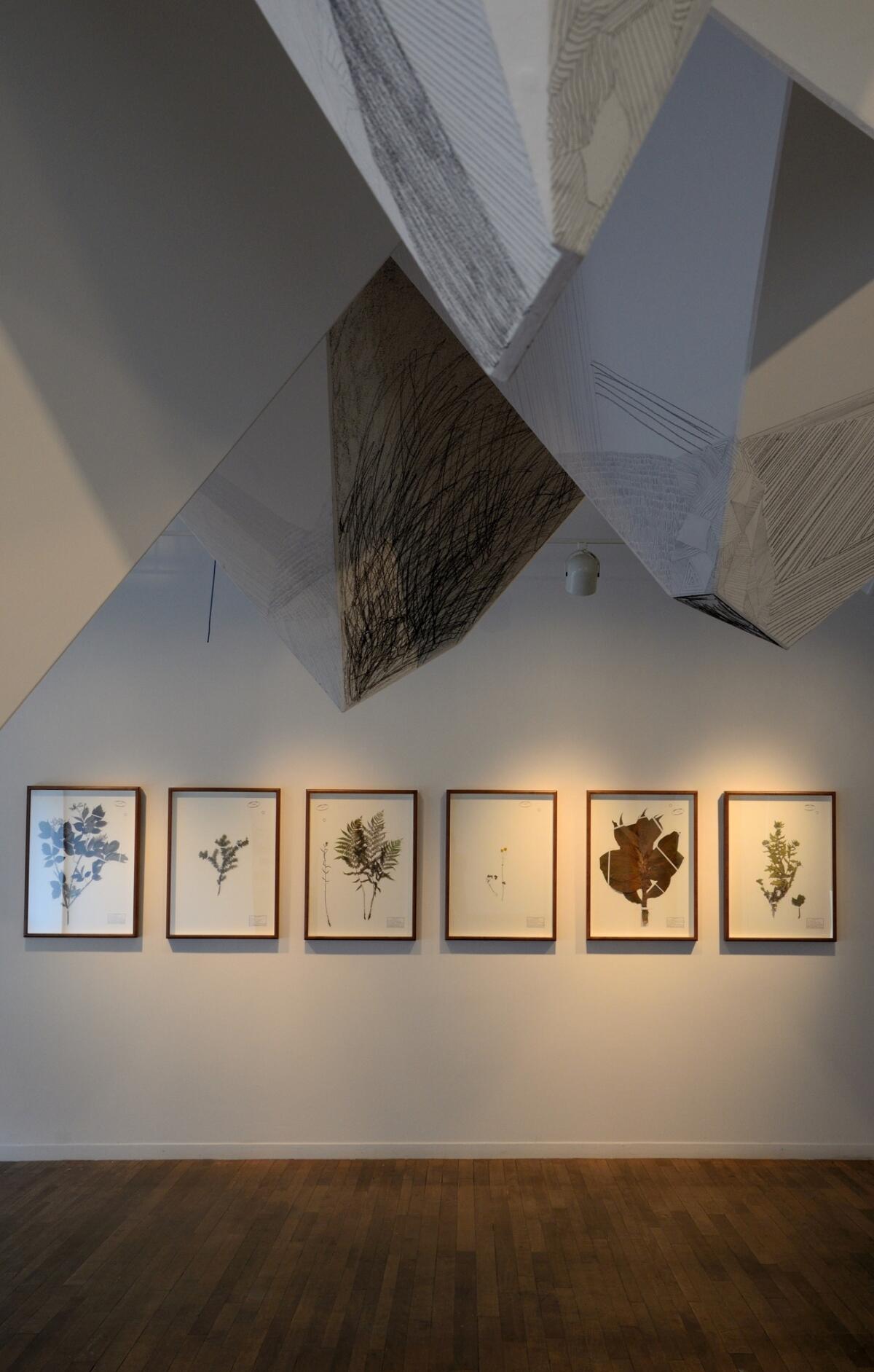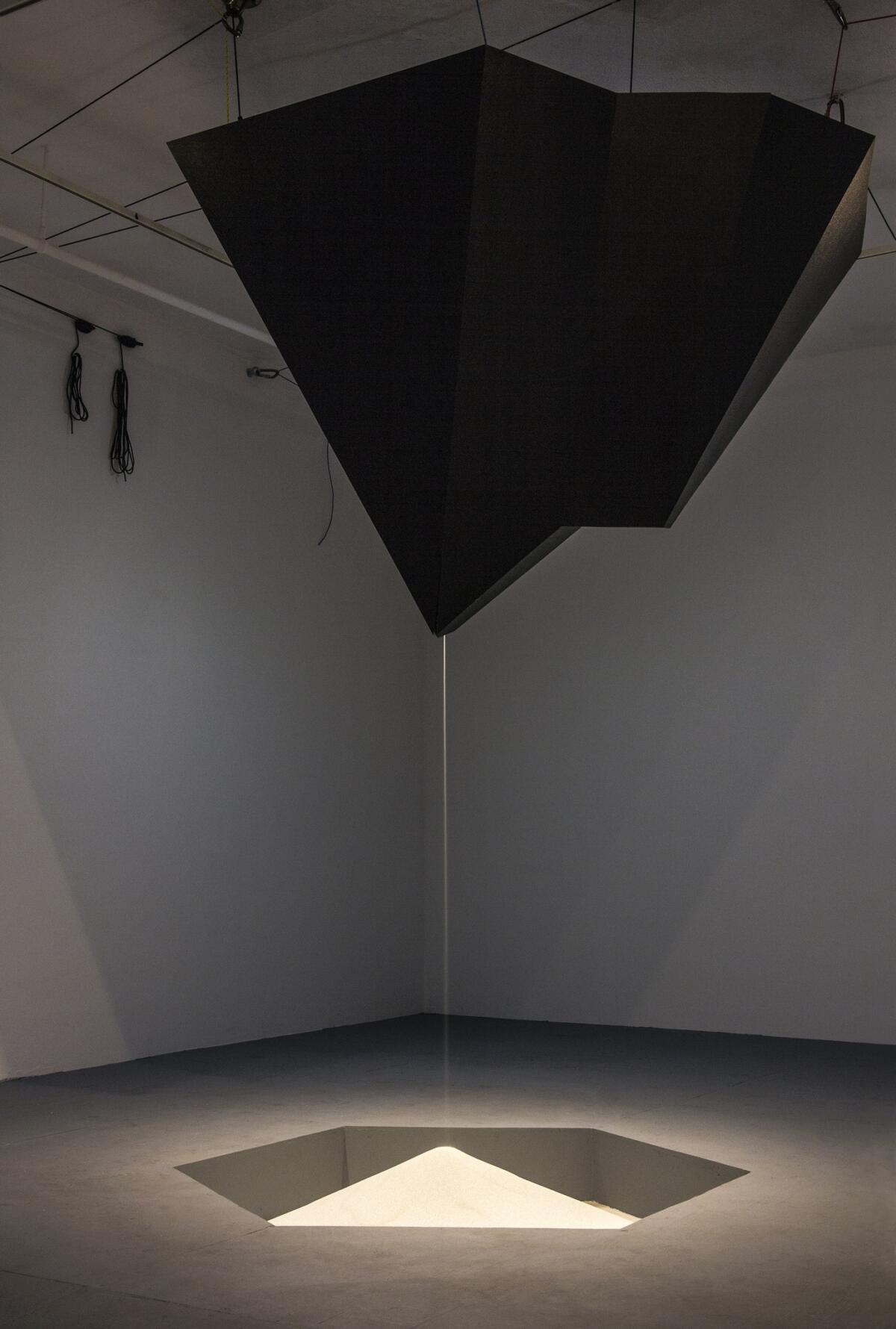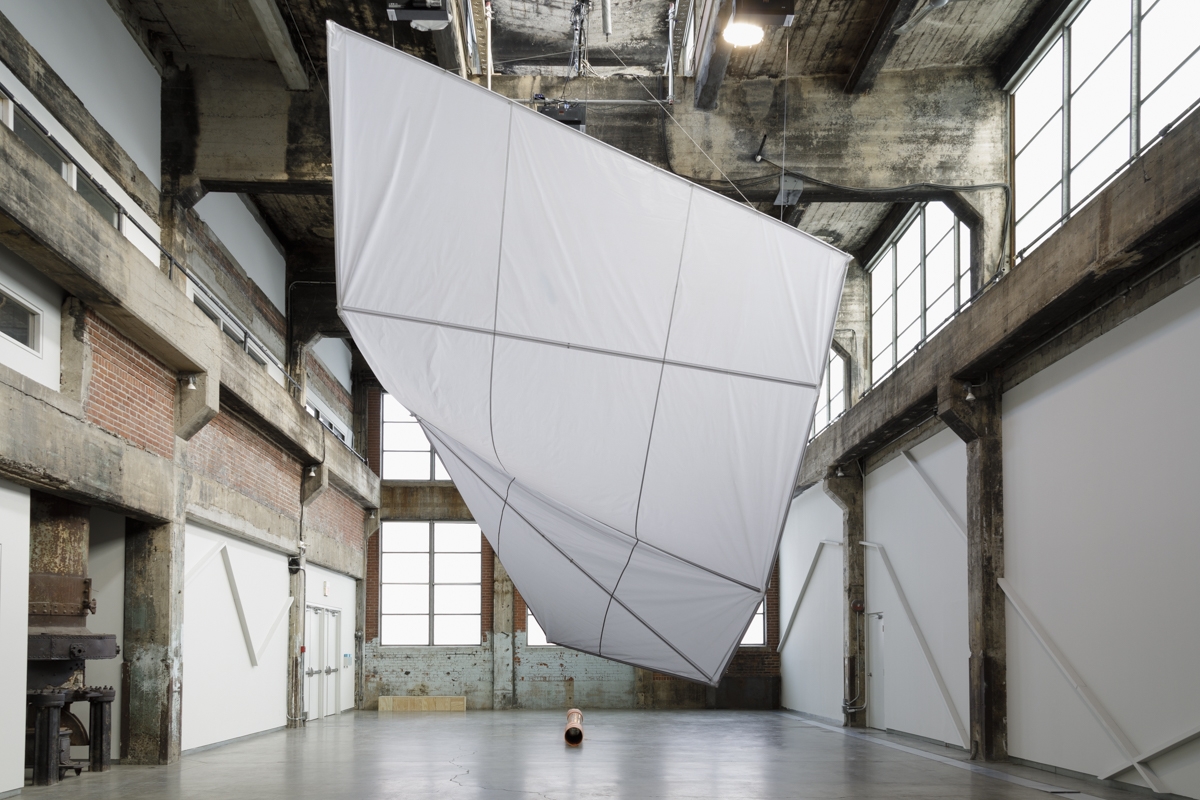
Amélie Laurence Fortin is a hard woman to kill. That was my first impression of the artist as I listened to her describe the different ways in which plants might poison you or end your life. Ten years ago we met by phone, after I’d seen a press release by Sporobole (then, an artist-run centre focused on installation-based practices in Sherbrooke, QC) featuring an exhibit by the Quebecois artist. We spoke on the phone at length, which gave me, an arts reporter for a daily current affairs radio programme, an exceptional challenge. What to edit? Which were the most compelling or evocative details of her art? Brevity is not my strong suit, and if I have the chance to listen to an incredible natural storyteller like Amélie Laurence, it’ll be a very difficult task!
For the conversation today, we met while Fortin, who is now partially based in Warsaw, was in residence at the Avatar sound centre in Quebec City. We sat together on the red couch of the sound studio to talk about Yarn of a Short Night, her last exhibition at Fonderie Darling in Montreal. But before we get there, we have to go back to the beginning, to the description of the exhibition that was my introduction to Amélie Laurence, Le paysage miraculeux.
JULIA CARON: When did you first present Le paysage miraculeux?
AMELIE LAURENCE FORTIN: I presented Le paysage miraculeux in 2014 in an artist-run centre in Sherbrooke, Québec, Canada named Sporobole. It was an installation that revolved around the relation between life and death in the context of exploring wild territories; nature that is not colonised by humans. My experience made me realise that this magnificent, sublime landscape is also very deadly. Like some plants are amazingly beautiful, but they can kill you. And the human desire to explore all these wild territories without knowing them can be sort of dangerous if you don’t know how to prepare yourself, even if it’s very tempting. So that was the idea behind the project.
And the way it was organised in the space was you had some drawings of plants?
These were real plants that were dried and displayed in the Victorian herbarium fashion. These plants were picked in the territory of Quebec province and all of them were poisonous to different levels. I collected seven of them. And it took me two or three years to gather all of them because it’s a kind of secret knowledge… finding them is a challenge. It isn’t very obvious. The people who know don’t really want to tell you where they are found. Like, they need to know you a little bit more to be sure that you have good intentions with these plants. So there’s something a little bit like entering a secret knowledge society, there is a magic and a hidden aspect about it all that was kind of very interesting. I met a lot of different people to make this project, including biologists, and I visited different herbariums to trace certain plants geographically. So that was very interesting. In the exhibition, I had tags describing the different scientific aspects and research about these plants in this way that they looked exactly like they do in herbarium collections. The result was very classic and elegant. In the middle of the gallery space I had a reverse cluster of massive white mountains hanging from the ceiling. Low enough that you wouldn’t feel comfortable walking under it, that you could even reach out and touch. Everything was hung with climbing and sailing gear. There were also three big light boxes with the title of the exhibition drawn on them, and that’s it.
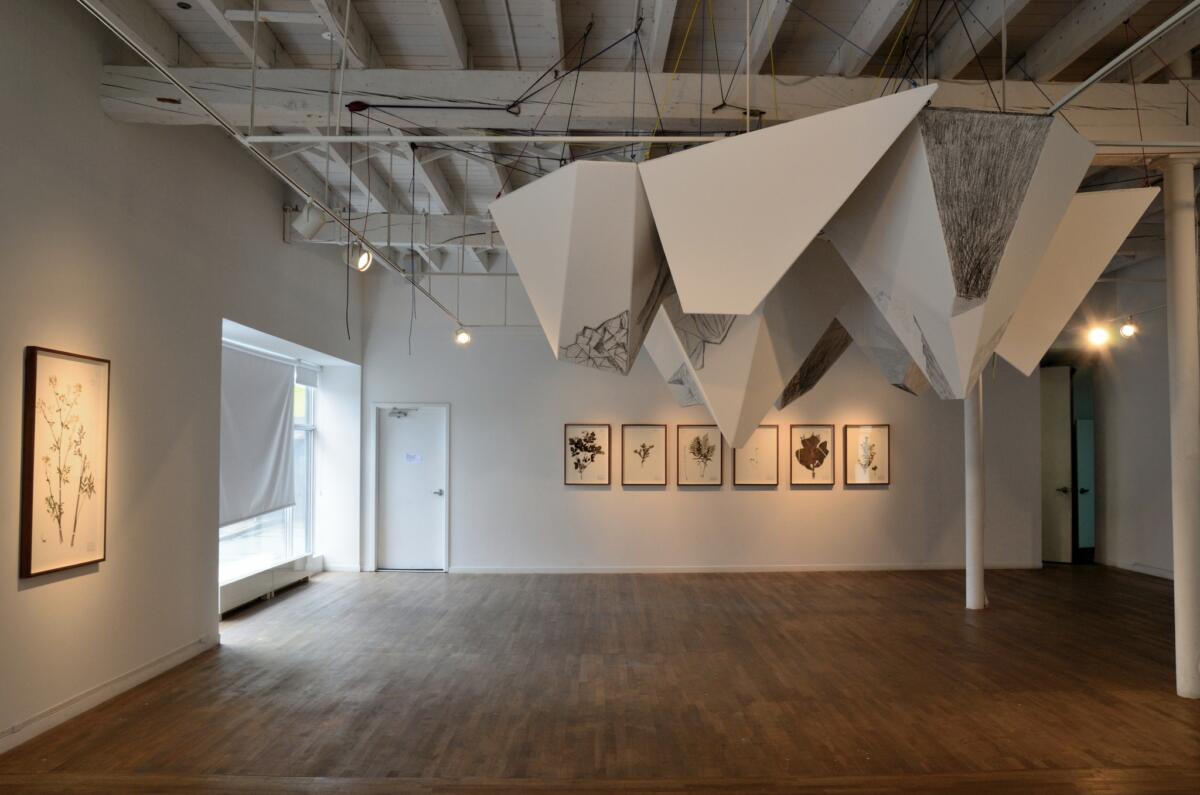

I also remember a stamp that you made that had your name on it?
Yes, on the board where I stuck the plants, I had like two little stamps that I ordered especially for this series, with my name, the title of the exhibition, and the level of toxicity each of the plants has.
It looked very official! Amelie, you were describing the structure that was hanging on the ceiling in that exhibition, and you said you wanted it to be low enough so that you wouldn’t feel comfortable underneath it – in your art practice, what is it that draws you to play with weight? And things that are structures that are hanging from the ceiling that sometimes feel as though they’re floating, but they still create this kind of ominous feeling? What is it about working with sculptures in that way that you keep coming back to?
You know, this is an excellent question. The first ever exhibition I made in 2005 was all about suspension. So I started with this. Another answer to this interest is acknowledging that a gallery space is not only walls and floor. Architecture-wise, I really love to see and put emphasis on the ceiling because of its potentiality. I am therefore always looking for an uncommon or unique ceiling; I’m always attracted to them and the ideas come instantly. Also I like when things are kind of floating, there is a sort of magic to it.
Working with the ceiling first is also a challenge because it increases the complexity of an installation. There are more things to think about and to secure to make it happen. I translate my passion for physics, engineering, mathematics, and construction when I work from the ceiling. Plus, for the visitor or the audience, having something suspended changes the relationship to scale and it helps me to play with tension. We are more vigilant when something is coming from the ceiling. It’s an emotion that I really like to work with.
I’m immediately thinking of a piece that I saw at the Royal Museum of Fine Arts (KMSKA) in Antwerp that was a giant hand that was high up on the ceiling, attached to the side of the wall, moving very slowly from time to time, in an unpredictable way. I shared it in my Instagram stories and almost everyone commented “creepy.” And I was like, “it’s cool. What makes it creepy?” And it’s that sensation of, “why is there that up there? What is it doing there?” We’re not used to seeing something out of the corner of our eye. Like you said, it’s either a cloud or a bird or a plane, but usually far enough away that we’re not at risk. But when we’re in a space that has a ceiling and we see something above us, it creates this sensation.
When objects are above our heads there is this sense of something uncanny; an almost childlike perspective or a waking dream where you can imagine things the way you want to imagine them, without following the rules. Challenging the convention that declares a mountain is a mountain, you know? I think in the world of visual art, or all creative work, you can play with these conventions of realism. It is something I find very interesting to contradict.


The engineering part is what I want to get to with Yarn of a Short Night, because we were just talking about it. We were talking about Le paysage miraculeux, where the mountains that are above us make us feel a little squished and they’re white and there’s some drawn on the surface. And then the theme of the triangular, upside down, mountain-esque figure comes in again in 125 Hours (Cent-vingt-cinq heures), the installation you presented at B-312 in Montreal in 2015, and it’s Obsidian black. It’s like the deepest black you could get. And then we come to Yarn of a Short Night where we have the floating white. It almost feels organic. Even though it is so engineered, I felt as an audience member that I couldn’t predict what it was going to do next. That made me feel as though I was watching a feather in the wind or like something that you can’t figure out which way it will float next: up, down, left or right. It was like a sense of freedom within the space, almost. But knowing your work, I know that all of this is very intentional. I want to ask you about all of that intentional work you had to do to create the floating element of Yarn of a Short Night.
I started adding kinetic sculptures to my installations slowly in 2015 and learning more about it was one of my goals. Three years ago I was like, “OK, I’m very good at engineering objects that are heavy, solid and strong, and I can hang them from the ceiling. But am I capable of doing something which is light, which moves smoothly and gives an aerial feeling?” My goal was to create something that was flexible, elegant, and unpredictable. I asked myself, am I able to do something like that? That was the question that led to the piece Windsower / Girouette that is in the middle of the exhibition Yarn of A Short Night at la Fonderie Darling.
To meet the challenge, I signed up for classes with professional dancers. I wanted to consider movement in the space differently, to consider the limitations of certain fabrics. I wanted to see and experiment with the natural movements of the fabric I imagined for the project, and how the body naturally responds to them. It forced me to move outside of my comfort zone.
One of the other ways I researched this was by sailing on the Saint Lawrence River in Canada, and learning more about wind and rigging. In Poland I went to the Baltic Sea and watched people flying kites and made friends with them to see how their sails and parachutes were engineered.
Tech fabrics – functional fabrics, usually made of synthetic fibres to serve very specific purposes – became very important in my research because my idea involved a lot of aeronautical calculations, and the weight of the material was a big concern, so I travelled to many places to meet people at the core of this kind of research, those who work in fashion, sport and leisure. For example, I travelled to a place just outside of Ottawa to meet one of the only makers of hot air balloons in Canada. I met him in his workshop to learn about his expertise. That allowed me to immerse myself in thinking about slow movements and contemplation; I wanted visitors to get stuck, to slow their rhythm enough to look at the piece for a long time. I worked very hard to ensure that the engineering aspect of the piece disappeared.
I would say you were successful in that attempt. And it’s a site-specific work.
It is. It is.
And do you remember the first time you looked at the space of Fonderie Darling and were like, “this is the right space for me to explore those airy ideas!” and all of what you just described?
I started looking at this space 20 years ago. Because it’s a very complicated space. The gallery, because there’s so much industrial materiality in the space, suggests that there’s a problem to be solved. So, there’s the concrete floor, there’s bricks, there’s concrete on the walls. There’s also plaster walls and there are large windows. There are windows on the top, near the ceiling, and there are large doors, old metal gates… there are so many things that can distract you from looking at the art piece.
That’s a good point, right? It can draw your attention away.
The space is already sublime, so for me, it’s a sort of question, an open question. It gives the same category of feeling that you can have for example at DIA Beacon in upstate New York. These kinds of spaces have their own personality and are very strong by themselves.
You have just evoked travelling in places that you’ve been to and the different ways that they have inspired you, and how we see that come together in your work. You live in Warsaw, in Poland, and in Quebec City, here in Canada. If we zigzag all of the places in this province or in this country, because you mentioned Ottawa as well, or near Ottawa as well. You have covered a lot of ground just to gather all the materials you used in Yarn of a Short Night.
So, part of my research is also to get to know every expert in every field that interests me and to reach out to them. And then I run to enter the particular field of expertise, and then I met the experts and really want to learn and to be next to them. Learning is a continuous process and making art is a good way to achieve that. And this kind of travel and learning from amazing people also brings a story into each piece. All these intentional movements create very very small stories within the bigger stories. And I think it’s very important. I really do it every time.


And if I ask you to estimate how many kilometres you have clocked on your little car, would you even have an estimate of how many?
No, no, no. I know how much it costs though! That would be crazy. But it’s a good exercise. I’ll do it at some point. I know where I’ve been by memory. I travelled a lot for the exhibition. Also because the prices were changing so much in 2022 that I needed to be precise in my choices and I couldn’t experiment as much as usual. Inflation forced me to change the structure of my concept to fit the new reality.
That’s astounding to think of. When you’re seeking out the best, then of course the question of money comes up.
Oh yeah, for sure.
Because if you want the expertise of the best…
Yeah, I actually love looking for the best. Some artworks don’t need to be perfect in their fabrication. Some of them need to be perfect. So, if I don’t have the skills myself for these ones to be as perfect as they should be, then of course I’m going to work with someone that really understands what’s going on. It’s better to collaborate with experts when you really want to have precision sometimes, but some ideas don’t need that level of attention and in this case it really doesn’t matter to me.


I mean, I don’t want to say it, but you just evoked the pandemic that began in 2020. Yeah. And you have told this story before, yeah. But tell us about where you were in the world when the pandemic first changed our lives.
I was in Belgium, I’d just arrived for a residency at Werktank in Leuven. I stayed there for a few days and then I left on March 13th. I had my studio in Berlin at that point so I took a train to Berlin. And then my husband lives in Warsaw, where I also live part of the year. While I was on the train he was telling me the border would close very soon, so if I wanted to cross the Polish border, it was now or never. The decision was rough to make. All my belongings were in Berlin. I could only have a very small suitcase with me, with basically one camera, some sound gear, a red gel for theatre lights, two pairs of pants and one T-shirt and that’s it. I decided to cross the border the day the border closed and so then I was in Warsaw for the first two months of the pandemic.
And how did that influence your art practice? Or, rather, did that influence your art practice?
It certainly did in the end. But at the beginning it was more like an opportunity, an opportunity to go back into the roots of making art which includes a lot of playing. I was immersed in that game. I observed and listened a lot. It was not stressful for me. I had time with no obligation except that I had to deliver a show in October in Berlin. So, I had creation in mind, but instead of trying to fulfil the plan I had when I was in Berlin, I decided to take this opportunity to develop something that was on site in front of me, with the material I had at hand. I could say that it influenced my practice in the sense that now I’m way more observant than I was before.
Wow.
I know that I can really calm down if I look long enough at things. My mind’s gonna find a new idea by itself, but by being calm. So, this just changed in my practice. I sort of left the two first months of the pandemic with more confidence, because I knew that I was able to make art with nothing, with just my body, a light in the attic, a camera and a glass of water. I was able to make so much with these very little things. Then I sort of found it a bit useless to pack a space with a lot of objects or to work with a lot of material, and then it just changed. The amount of material that I play with, or I work with. I reduced the quantity.
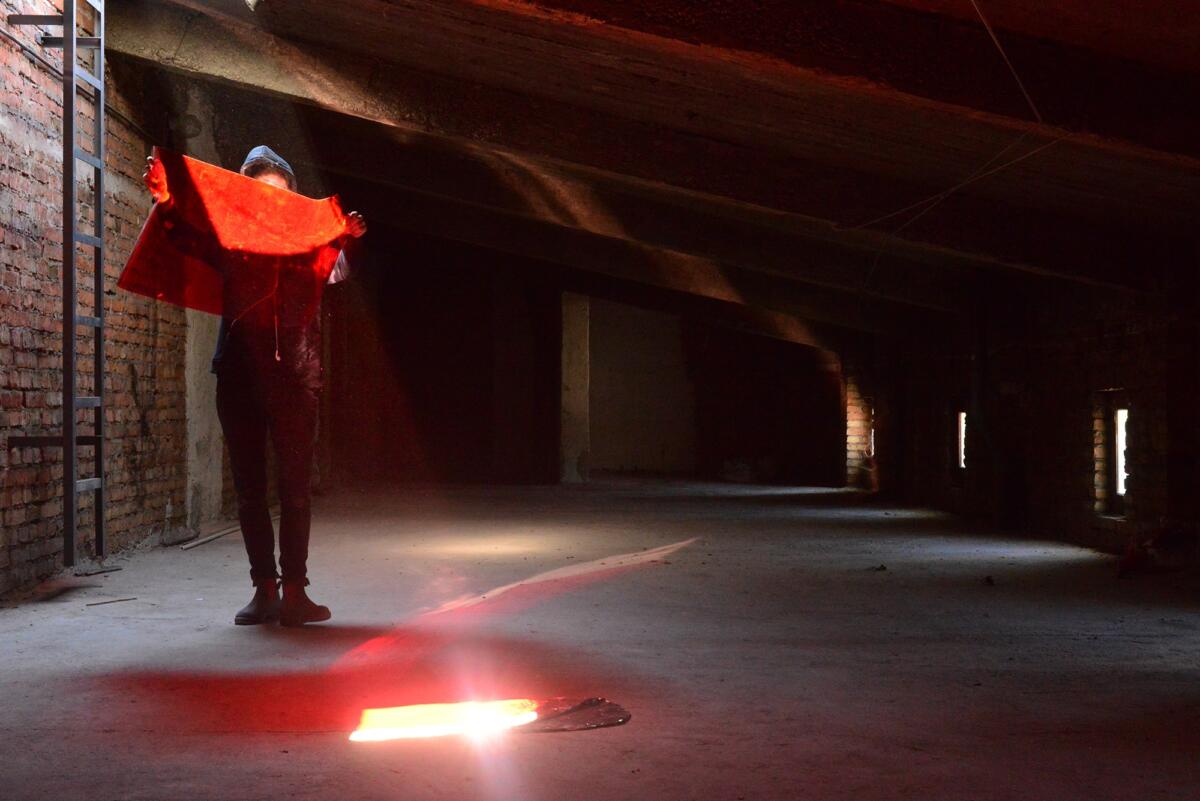

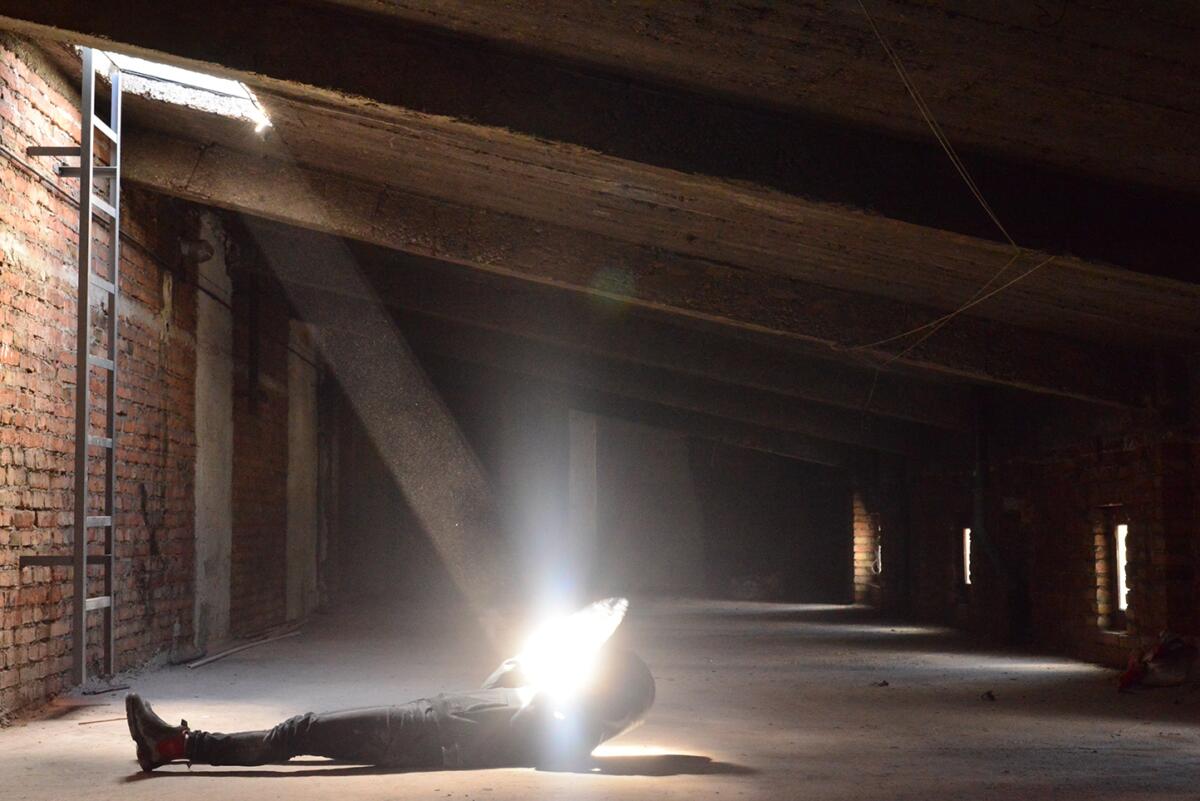
And that comes back to what you were saying earlier about being intentional. Yeah. It is stark, it’s paired down. As we’ve been talking, I wanted to also ask you about the influence, the visual or aesthetic influence, the fact that you live this international life, that you spend part of your life in Poland. What kind of influence has living that international life had on your art practice… and more specifically, has Poland had on your practice?
I will start by saying that Warsaw has had a major influence on my work. For its architecture mainly. Warsaw was heavily destroyed during the second world war and what used to be a very elegant city was reconstructed using multiple parts of multiple different visions. Mixing the remaining buildings of different periods like Neoclassical, Baroque, and Functionalism to Social realism architecture is something very peculiar. The way the city was reshaped is such a unique urban experiment that has a strong effect on me. For example, the Social realism of Plac Konstytucji (Constitution Square), which contrasts so much with the buildings in that area. And in the centre of the city is Plac Defilad and its very wide boulevard that cuts the city from any normal human scale experience, and it’s impossible not to talk about the infamous Palace of Culture and Science which sits in the middle of this square, a still controversial gift to the city from the Soviet Union. The Palace of Culture is a very massive object. When you’re next to it, you don’t know how to look at it because it’s too big. The scale of buildings in Warsaw in contrast with the empty space around them is incredibly impressive. This mass of concrete. This Brutalism. This relationship with scale is something that has always been very important in my practice so being in Warsaw makes sense in that regard.
Plus, there is so much space between everything in the city. Neighbourhoods are separated from each other. It’s hard to link and connect things together which gives a sense of solitude to the city that I like. Poland for me is kind of a magic place that was invaded by Brutalism. Every time I’m there I sort of grasp and accumulate these feelings. In that sense, the urbanism of public spaces is what has influenced me t and my work the most when it comes to Poland.
You do thank some Polish people in your acknowledgements (for Yarn of a Short Night). Can you tell us more about them and the roles they played in this exhibition?
There is my husband, Paweł Kamiński, he’s always there. The person who is like the mirror of the practice, so it’s impossible not to talk to him. He’s very involved in my work because he’s very honest. He is always telling me what’s right and what’s wrong, what works and what doesn’t. He is giving me the confidence to stick to the original idea. There’s also Karolina Szymura, she’s a professional dancer. She’s from Poland but she has lived abroad for a long time. She is now based in Berlin. She’s amazing. She’s very strong, sensitive, and all-around very intelligent. She was there for every step along the way, reconnecting me with movement and to my body, the mechanics of the human body, what we can do, and how we can feel. Martyna Wyrzykowska is a young graphic designer, she created the visual identity that accompanies the project Yarn of A Short Night. She also created the original typography design for all the titles of the exhibition and artworks. Polish graphic designers are very stunning in general, but I specifically wanted her special touch on my project. And then there’s Piotr Wasylczyk. He’s a physicist, as well as professor in the physics department at Warsaw University. Luckily enough, his office and this science university is next to my studio. So we became friends and had lunch together from time to time, and we’ll talk about a lot of things and he has a very interesting, open mind. He has a wonderfully different perspective on how to tackle physics, science, and like how magic happens within physics. So, we talk a lot about magic and how to talk about physics without talking about physics. So yeah, these are the four.

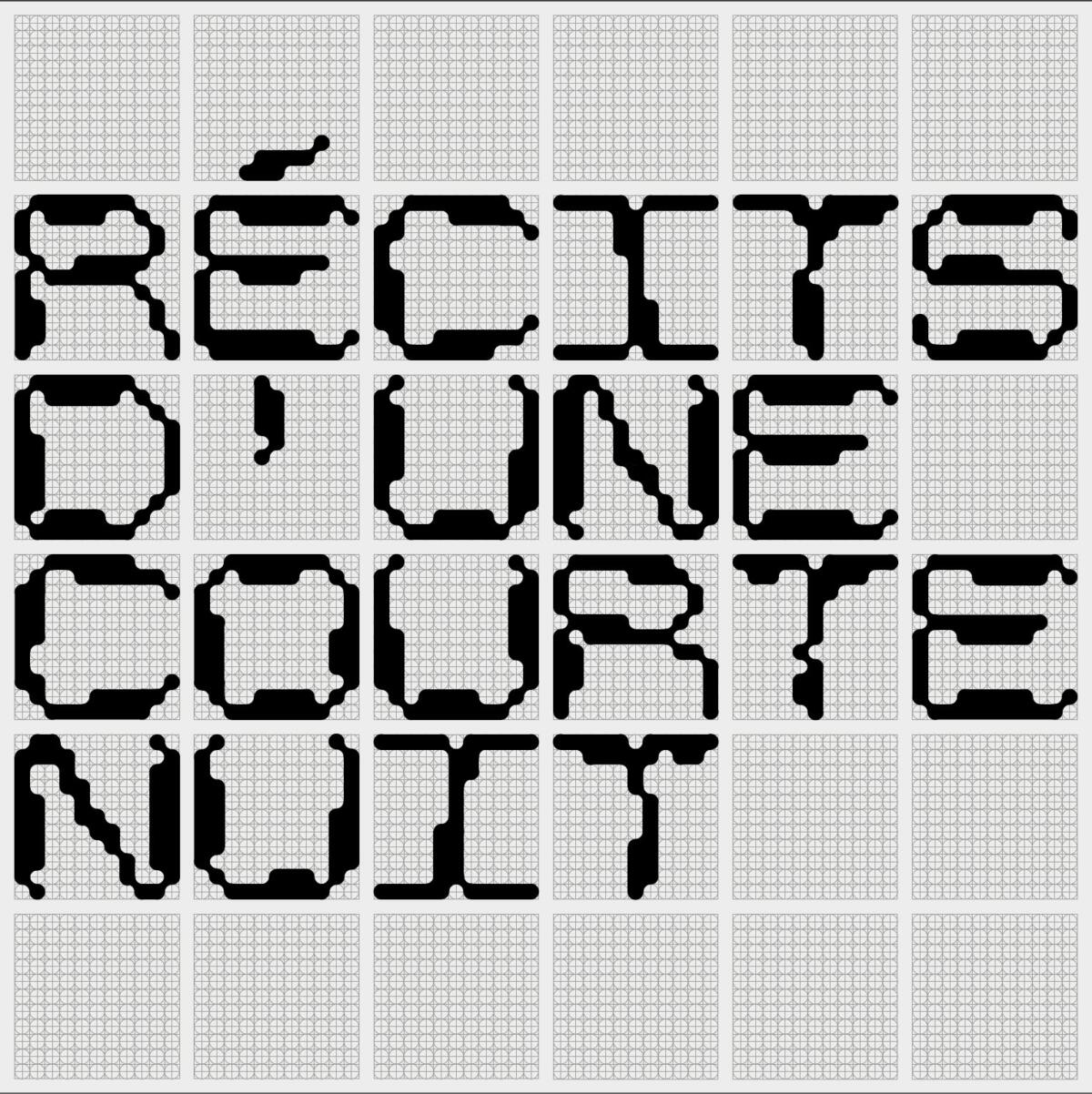
I should also mention the piece that we’ve spent the most time talking about, or the element of the piece that we’re talking about the most is Windsower / Girouette
Yeah, it’s a piece with a bilingual title.
The beautiful translation of your art, of the description we can read at Fonderie Darling in the exhibition space, but also online. It made me wonder what it is like for someone who speaks multiple languages and who reads in multiple languages… What kind of experience is it to have someone whose job is to work just with words, to try to describe visual art and the meanings behind them? They’re describing a lot of what we *don’t* see in the piece. They’re not necessarily describing the physical shape, or the length, or spacing between objects, they’re talking about the atmosphere that you create, the works that you’re referencing that may not be obvious at first. What’s that process like for you? I mean, it’s not the first time you’ve had someone translate your artistic description, but let’s talk specifically about Yarn of a Short Night, Oana Avasilichioaei is a beautiful writer.
The translator. I think the translation is very close to the French one, though.
I’m just always interested in translation…Can you tell me more about the text that accompanies Yarn of a Short Night?
Of course. If we want to talk about translation, it’s very important to know that the title of the show was in English first because I discussed it with my husband. When titles are under consideration, it’s a challenge since there are three languages in my life. I realize that there are some emotions, some words that are stronger or more accurate in one language than the other. As I am looking for the most powerful words to describe what I’m going through or what I want to express in an exhibition, I never know which language will be used first. So in this show, English was the language that contained enough precision. The title was initially Yarn of a Short Night and then we had to translate it into French. Since I am francophone and my mother tongue is French and I was exhibiting at Fonderie Darling which is in Quebec province, it was very important that the title reflect that. Then I asked myself, “OK, so how do we translate yarn?” Yarn. This word is amazing.
(interrupts ) …It immediately evokes fabric.
Fabric but also…
Story, story and a very well told story.
Yes.
Very, very well told and….
And time.
Yes… coming back to intentionality and not filling the space with too many objects, but also not filling the title with too many different meanings. You want the title to be specific.
Yeah, and yarn. With the curator of Fonderie Darling, we decided on récits (tales), plural, with an s, because there are multiple tales, there is a lot of time, and there are a lot of micro-stories in each of the artworks in this exhibition. This exhibition is inspired by my story but it’s simultaneously not about my story. It’s about all the tales that we carry with us as humans.
The three sculptures in the exhibition present that relationship with story, language and translation of experience in a way. Each sculpture is separate from the other. They are in three distinct territories. It’s like three chapters, or times, that’s why there is also a design for the title of each piece that functions like a book cover. As a visual artist, I work with emotion most of the time. Even though concepts are central to my practice I try to translate emotion through objects and space as someone who writes, who translates ideas into words which become stories.
I love that certainty.
The translator of Fonderie Darling, she understood it very well and did an amazing job I think. Which is very important. This is something that separates this show from the other shows that I made before. I paid very close attention to details of many things…I certainly had more time than usual to work on this exhibition. But for every piece, there’s attention to details: the three pieces, the intervention on the walls and then the visual of every piece.


I was going to ask you about monomyth
The monomyth.
The monomyth.
Well, I can talk about it very quickly. So like there’s three pieces in the exhibition, First there’s Axis Mundi which is a sculpture more than six meters long, a cylinder made of engraved copper and terracotta which lays on the ground. The axis mundi concept is an old belief that an object or a pole connects earth and sky. It’s a long and persistent belief that there’s a connection between humans and the sky or humans with God. I have decided to redirect the verticality to horizontality so in that piece, it insinuates that the connection is in fact with all humans, from the past to the future. Which for me is sort of making sense so much now in 2023 when we try to actually change the structure of how humans behave with each other and that new voices are being heard, new stories appear, more people speak and share. So making a horizontal channel that functions like a pipe, an instrument, or just a passage was very natural to me. Meanwhile I am also questioning the verticality since I prefer a posthumanist posture to life. So this is Axis Mundi. We already talked about Windsower / Girouette, which is the very big, white sail that’s moving in the space with constance and a sort of presence that evoques calm and strength. And finally, in the back of the gallery there is a piece entitled monomyth. The monomyth is the Hero’s Journey, a theory by Joseph Campbell, an American writer and mythologist. In the beginning of the 20th century, he reported on what he called the “hero’s journey” from all the adventure books he collected.
As a woman who spent a few years of her life on heroic survival expeditions in the ocean, it’s important for me to think about how to make more space for different types of heroes. The traditional male hero was never satisfactory to me because it is limiting this journey to a heteronormative male goal: woman and glory. I know a lot of people with amazing adventures and stories to tell that are not coming from this traditional, dominant perspective, myself included, and who fight to have their stories recognized. The point of Campbell’s Hero’s Journey is to complete the circle, and to be recognized and valued for the adventure, which cannot happen for so many other types of heroes in our world. What happens when you don’t fit into the traditional figure of the hero, can you complete the full circle? Can you receive the gifts and recognition? It’s a question that I ask myself frequently. I am eager for answers, for new forms and new characters in our stories. I think there are a lot of unknown stories, stories that will be discovered and told that will surprise and challenge us, and I am excited about it.
So my installation monomyth is about the stories we don’t know yet. The objects we will still gather, the ones we don’t know how to decrypt or the ones we’re gonna gather in the next human story. So it’s super mysterious. The small sculptures I made are not clear or easily understandable. They’re shaped very geometrically so we can read the shape but the way I installed them makes them mysterious and equally open and closed, like a language that you are learning but haven’t mastered yet.
Thank you.
Thank you, Julia.
Edited by Katie Zazenski
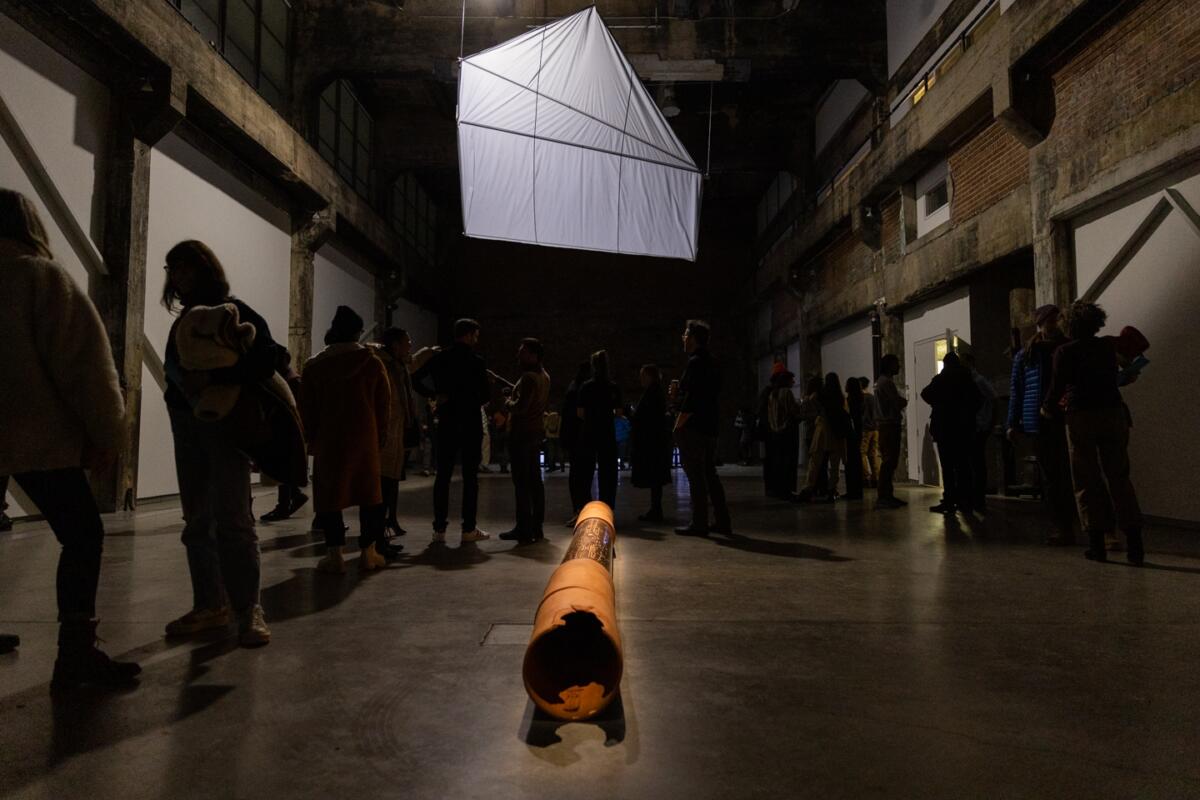

Amélie Laurence Fortin lives and works between Quebec City (Canada) and Warsaw (Poland). Her work has been presented in various solo and group exhibitions, residencies, art fairs, festivals, and is part of private and public collections in Quebec and Europe.
Julia Caron is a bilingual journalist and broadcaster based in Quebec City. As host of the province-wide CBC morning show Quebec AM, she is perhaps best known for her appreciation of Canadian and Québécois history, and what we can learn about the present from our past.

